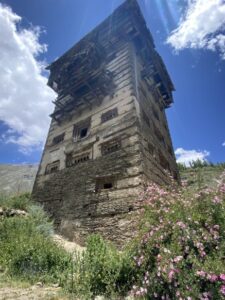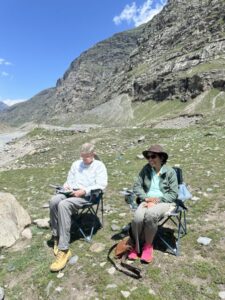The Interplay Between the Past, Present, and Future of the Himalayas
The Interplay Between the Past, Present, and Future of the Himalayas
An Interview with Dr. Sonali Gupta




DARK N LIGHT INTERVIEW
BY YAMINI VIJAYAN
It’s only after living in the Himalayas over longer periods of time that Dr. Sonali Gupta—an anthropological archaeologist—began to grasp just how much of the region’s history was missing from the books that attempted to capture it. Long conversations with those who have always lived in the mountains slowly revealed to her their specific belief systems, and she wanted more and more to record it, from their point of view.
Despite having put down roots in Himachal Pradesh in the last decade, Dr. Gupta recognises that she may never be considered “an insider”. But she sees that by spending more time listening to local perspectives, and gaining the community’s trust, she can learn about and archive these histories. “I believe the Himalayan regions have often been overshadowed by the emphasis on mountaineering and climbing,” says Dr. Gupta. “Yet, I see the Himalayas as a vibrant crossroad in a challenging terrain, fostering dynamic exchanges.”
Over the last few years, Dr. Gupta has been archiving her conversations with local communities, and working on a book that documents folk narratives from the Himalayas. In particular, she has been drawn to mythmaking, and how messages of environmentalism are culturally transmitted, across generations, through these folk narratives.

In 2020, Dr. Gupta set up the Himalayan Institute of Cultural and Heritage Studies (HICHS) in Himachal Pradesh, envisioning it as a centre for learning for every kind of knowledge-seeker. For her, the diverse culture and heritage that have evolved across different Himalayan locales illuminate a complex and formidable history. “This rich tapestry of traditions and narratives offers a profound insight into the resilience and diversity of the Himalayan landscape, transcending the conventional narratives centred on mountaineering,” she adds.
One of the attempts of the institute is to gather Himalayan scholars and create a Himalayan focus for anyone interested in the culture and heritage of the region. Since its start in 2020, HICHS has hosted 219 talks by Himalayan scholars and enthusiasts, exploring a wide range of topics, from architecture and geography to philosophy and conservation (available for free on Youtube channel).
Some of the scholars include Aditya Malik (author of Tales of Justice and Rituals of Divine Embodiment: Oral Narratives from the Central Himalayas), Ed Douglas (author of Himalaya: A Human History), anthropologist Ian Baker, Dr. Anjali Kapila (author of A River Sings: The Ganga from Gangotri to Haridwar), and Dr. Siddharth Pandey (author of Fossils).
Read excerpts from an interview with Dr. Sonali Gupta: https://darknlight.com/projects/interview/the-interplay-between-the-past-present-and-future-of-the-himalayas-an-interview-with-dr-sonali-gupta/
